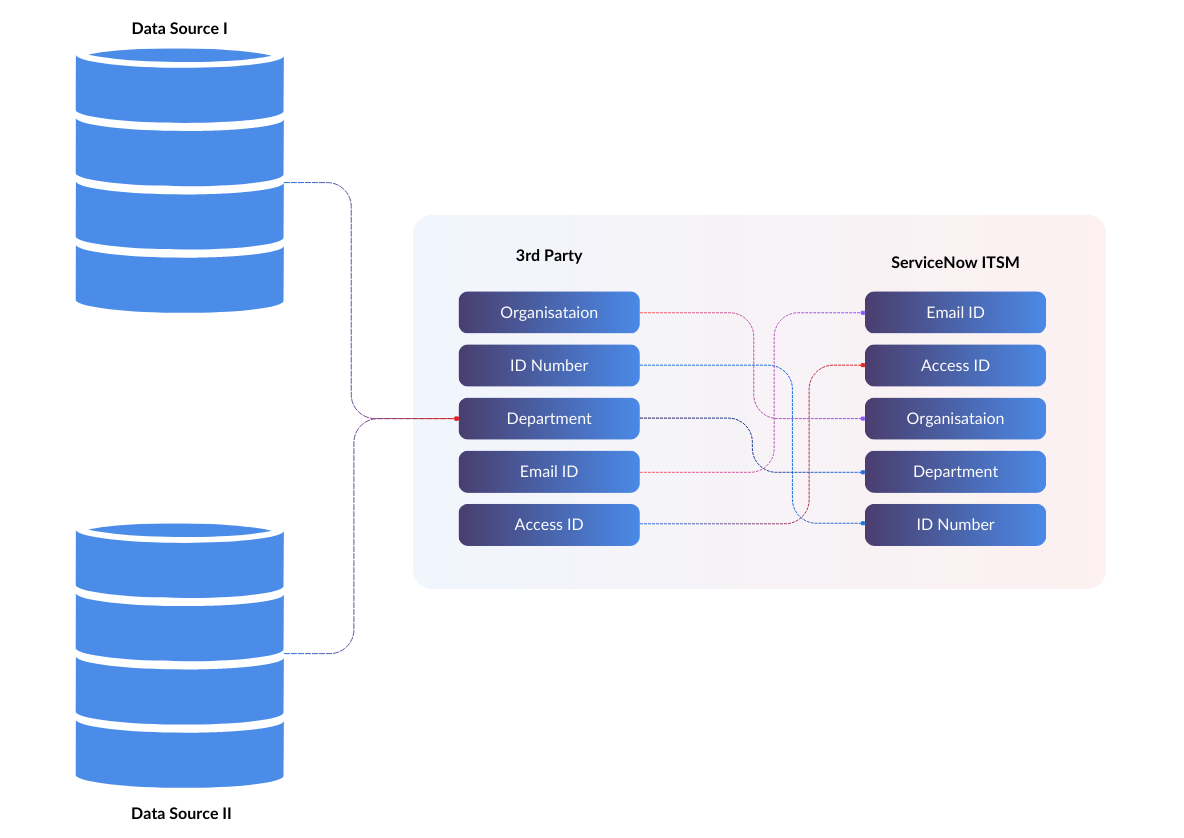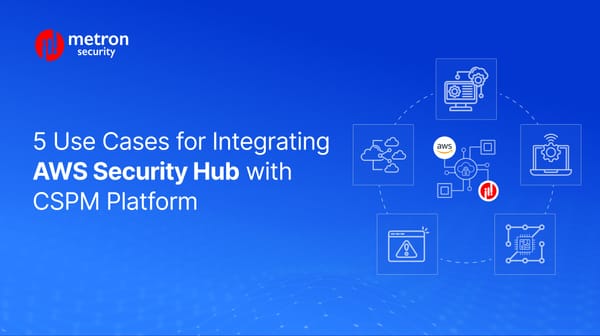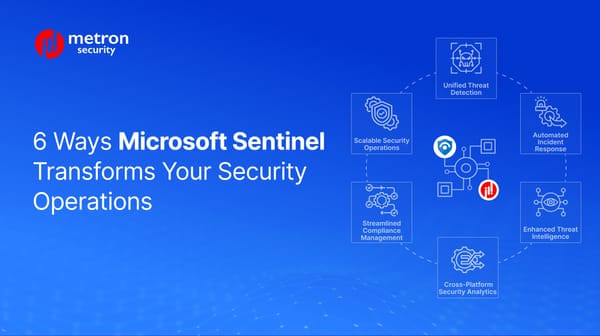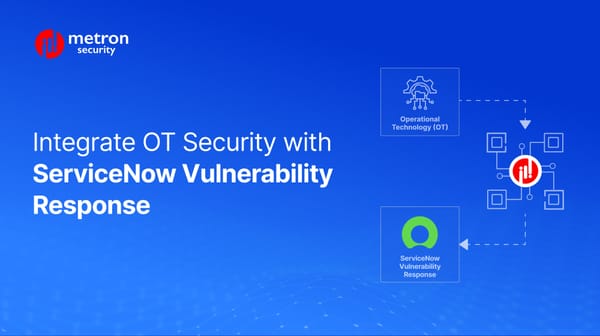ServiceNow ITSM and its Architecture
Anmol Jain

ServiceNow ITSM is a cloud-based IT Service Management (ITSM) tool that helps businesses streamline their IT operations. It automates many IT tasks, such as incident resolution and problem management, which frees up IT staff to focus on more strategic initiatives.
The platform is based on ITIL (Information Technology Infrastructure Library) guidelines, which are industry-standard best practices for IT management. This means that businesses can be confident that ServiceNow will help them to deliver high-quality IT services to their customers.
In this blog, we will walk you through the basic design and architectural components needed to integrate ServiceNow ITSM with other cybersecurity platforms and tools.
Before deep diving into the integration, let’s briefly discuss why organizations integrate ServiceNow ITSM with their tools and how this integration benefits them.
Reasons for Integrating ServiceNow ITSM
The various systems within an organization can be seamlessly integrated to provide a single workflow thanks to ServiceNow's user-friendly integrations.
There are many reasons why organizations might want to integrate with ServiceNow ITSM. Some of them are:
- Smoother data sharing: Connecting with ServiceNow ITSM breaks down data barriers and promotes effortless data exchange between different departments. This easy access to information allows IT teams to quickly find the details they need to resolve issues efficiently and effectively.
- To automate workflows: Integration can automate workflows that would otherwise be performed manually. Such tasks can become monotonous and too manual. This can save time and effort, and also help to improve the quality of service in terms of dealing with cyber attacks.
- To improve incident response: By integrating ServiceNow ITSM with monitoring tools, organizations can improve their incident response capabilities. This can help immensely in minimizing the impact of security breaches and other incidents.
- To enhance customer service: Integrating ServiceNow ITSM with customer relationship management (CRM) systems can help organizations provide a more seamless and customized user experience.
- Reduced downtime: By integrating ServiceNow ITSM with a configuration management tool, organizations can track changes to configurations and identify potential problems before they cause downtime.
- Enhanced compliance: ServiceNow ITSM’s integration with a compliance reporting tool will allow organizations to generate compliance reports automatically which, in turn, can help to demonstrate regulation compliances.
- Improved decision-making: By integrating ServiceNow ITSM with a business intelligence tool, organizations can analyze IT data to identify trends and make better decisions.
In addition to these, there are also specific benefits to integrating ServiceNow ITSM with certain types of platforms. For example:
- Integrating ServiceNow ITSM with a cloud computing platform can help businesses manage their cloud resources more effectively.
- Integrating ServiceNow ITSM with a project management platform can help better track and manage IT projects.
The decision of whether or not to integrate ServiceNow ITSM with another platform will most definitely depend on the needs of the organization. However, in lots of cases, integration can provide significant benefits in terms of efficiency, effectiveness, and compliance.
In any event, now that we have understood how the integration of ServiceNow ITSM with various tools and platforms benefits an organization and how this integration brings about significant improvements in organizations, we can now turn to the architecture of this integration.
ServiceNow ITSM Architecture: Understanding the Backbone of IT Service Management
In the ever-changing world of IT service management (ITSM), ServiceNow stands as one of the leading platforms, empowering organizations to streamline their IT operations and deliver exceptional IT services. At the core of ServiceNow's capabilities lies its robust architecture, a well-designed framework that enables organizations to effectively manage their IT services and processes.
ServiceNow's ITSM architecture is meticulously organized into distinct layers, each contributing to the overall functionality, scalability, and flexibility of the system.
These three layers are briefly explained below:
- Infrastructure Layer: The foundation of the architecture, the infrastructure layer provides the underlying hardware, software, and network resources that support the entire ServiceNow platform. This layer ensures the platform's availability, stability, and performance, forming the solid bedrock upon which higher layers operate.
- Platform Layer: This layer encompasses the core services that constitute the backbone of the ServiceNow platform. It includes crucial elements such as the database, workflow engine, and user interface. The database stores and manages the vast amount of data generated by IT service management processes, while the workflow engine orchestrates the automation of these processes. The user interface provides a seamless and intuitive platform for users to interact with the system.
- Application Layer: The application layer consists of the ITSM applications. These applications are used to manage IT processes such as incident management, change management, and problem management. The application layer helps organizations deliver and support IT services.
The ServiceNow ITSM architecture is modular and scalable, making it suitable for organizations of all sizes. The platform can be configured to specific needs and can handle increasing workloads and data volumes.
Also, ServiceNow ITSM is a cloud-based platform, which means, you can access and make the most of it over the internet without needing to download or install any application. You can open the URL in your preferred browser to access this platform and use it as per your requirements. Prior to this, you just need to connect with ServiceNow to inform them of your requirements and on that basis, get access to the platform.
Now, to get deeper into ServiceNow ITSM, we need to know its working process when integrated with any platform.
ServiceNow ITSM Integration Architecture
While we've talked about the ServiceNow ITSM before, it is important to understand how it works before actually integrating it with any platform.
The diagram below showcases a broad overview of the necessary integration components:

Step 1: Plugin Installation and Configuration
To get started, install and configure the dedicated ServiceNow plugin within the target third-party platform. This plugin acts as a bridge, enabling smooth communication and data exchange between ServiceNow and the external platform.
Step 2: Data Fetching via REST API
ServiceNow utilizes the REST API, a standardized interface, to retrieve data from the connected third-party platform. This data is crucial for further processing and analysis.
Step 3: Scheduled Data Import
ServiceNow allows flexible data import scheduling, adapting to your specific needs. Import data automatically every 10 minutes, 24 hours, or even at any point after the last API call, based on your business requirements.
Step 4: Data Storage in Import Sets
Before data transformation occurs, ServiceNow stores the imported data in the Import Sets. This acts as a staging area to hold the data after receiving it from the data source.
Step 5: Data Mapping and Transformation
ServiceNow ITSM has specific data fields and columns. To ensure compatibility and accurate processing, the imported data is mapped to these standard fields using a "Transform Map." This essentially translates the data into a language that ITSM understands.
Step 6: Data Storage in Incident Table
As incidents are created in ServiceNow ITSM and assigned to specific owners for resolution, this platform creates the incident table to store such information. The Incident Table plays a crucial role as it stores transformed and mapped data for all past and present incidents/events within the organization, providing a comprehensive history and facilitating efficient incident management.
Step 7: Leveraging CMDB Data
The Incident record can be linked with the Configuration Item (CI) in the ServiceNow Configuration Management Database (CMDB). This CMDB acts as a blueprint, providing a detailed overview of the organization's entire asset infrastructure. It shows how assets are interconnected and helps predict the potential impact of actions on various systems. This link with a CI is useful for the owner to understand what assets may get affected while taking any action to resolve an incident.
Step 8: Automated Actions Based on Incidents
Based on the information recorded in the Incident Table, ServiceNow can be configured to trigger specific actions. For example, if an incident reports malware infection on a system, ServiceNow might isolate that system to prevent further harm, considering the possible impact on other connected services and products.
This step-by-step breakdown provides a comprehensive understanding of how ServiceNow integration effectively manages and handles data exchange between different platforms.
So, before doing any task, it is important to have the resources ready to do them. The same is the case for all integrations, including this. So, let’s find out if there are any prerequisites to integrating ServiceNow ITSM successfully, and if so, then what are they?
What’s required before the successful integration of ServiceNow ITSM?
Before downloading or installing any application, we ensure particular things like checking if the application is compatible with our device, whether we have enough storage, whether we are installing the right version, and so on, depending on the type of application and the device we are installing it on. Similarly, before you integrate ServiceNow ITSM with your tools, you must keep certain things in mind, such as:
- Network Connectivity: Your ServiceNow instance and the tool that you are integrating with the need to be able to communicate with each other over the network. This may require opening firewall ports or configuring VPN connections.
- User Authentication: You will need to create user accounts in both ServiceNow and the tool that you are integrating with. These accounts will need to have the necessary permissions to access the data that you want to exchange.
- Data Mapping: You will need to map the data fields in ServiceNow to the corresponding data fields in the tool that you are integrating with. This will ensure that the data is exchanged correctly.

- Testing: Once you have configured the integration, you will need to test it to make sure that it is working properly. This may involve creating test data and verifying that the data is exchanged between the platforms correctly.
Conclusion
I hope this blog has helped you get a brief overview of ServiceNow ITSM, its architecture, and its importance. There is always more to understand when you dive deeper into the integration in a more technical aspect and this is just a gist, an introduction to help you get started.
Is your organization looking to set up any integrations with ServiceNow or having trouble connecting security apps with its infrastructure? For any queries or integration needs of your business, concerning cybersecurity platforms, please feel free to reach out to us at connect@metronlabs.com.









